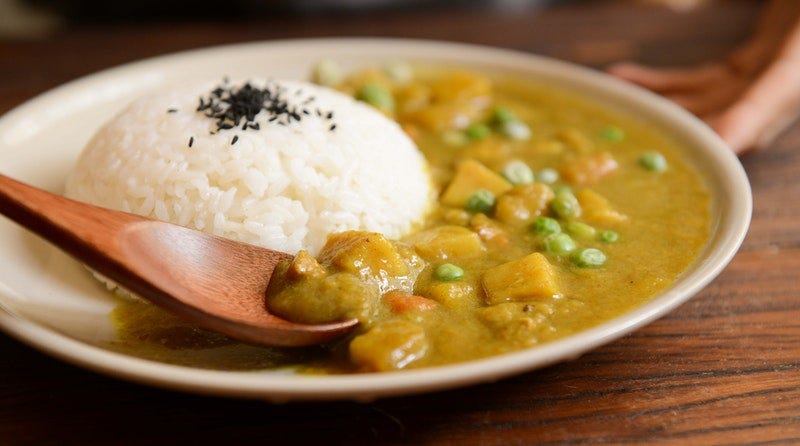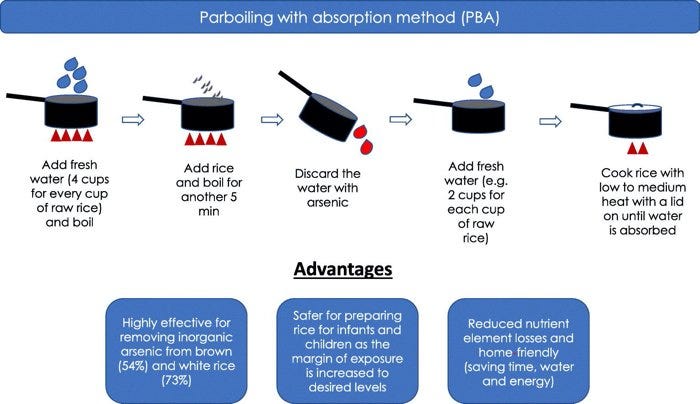Today I want to share three ways you can improve the healthfulness of rice.
FIRST, you can cut the amount of calories in rice by 60% with this simple cooking method. According to researchers, “the best way to make it is to simmer the rice for 40 minutes with a teaspoon of coconut oil, then let it cool and keep it refrigerated for 12 hours.” The reason? “The more resistant starch, the fewer calories we can absorb. The team notes that you can still re-heat the specially prepared rice without accruing any additional calories.”
The second and third points are in reference to lowering the toxicity of rice. Toxins can enter rice in two ways, first, in the way they are grown. And second, from the water they are cooked in.
SECOND, since rice is grown in flooded rice fields, rice has 10x the amount of inorganic arsenic than other forms of cereals. According to Science Alert, “for several years it's been understood that the levels of inorganic arsenic in rice can be reduced in various ways, via washing or rinsing, or using different cooking methods. However, some of these can also lower the levels of nutrients in rice, which also isn't desirable. They examined four processes, all of which involved cooking rice via the absorption method, using either unwashed rice, washed rice, pre-soaked rice, or parboiled rice.”
Parboiled rice significantly reduced the arsenic exposure, while retaining the nutrients. Here’s how it works…
“bring water to the boil (four cups of fresh water for every cup of raw rice). Then, add rice and boil for another 5 minutes. Next, discard the water (which has now removed much of the arsenic that was in the rice), and add more fresh water (two cups for each cup of rice). Finally, cover the rice with a lid, and cook on a low to medium heat until the water has been absorbed.”
THIRD, the last tip that most people overlook is the purity of water that you use to cook the rice. Cooked rice is significantly heavier than uncooked rice. Why? Because it has absorbed the water and any toxins that are in water. There are many cities across the USA that contain high levels of dangerous toxins. I recommend that all water that you drink and consume should be freshly distilled water.
All three methods haven’t been studied together, but I don’t see why you can’t combine all of the above cooking methods to achieve maximum benefits.
Tell us what you think in the comments.





I read an article by journalist Bill Sardi which argues that cooking rice the regular method preserves the antinutrients like phytates which help sweep out the toxins like arsenic from the body. May be more studies are needed ?.
I will look into the resistant starch part. This year I learned how to soak my rice 6-8 hours and discard (measuring) then cook with same amount of water added for half the time. You can half the time again by doing this in a pressure pot, also saving fuel.